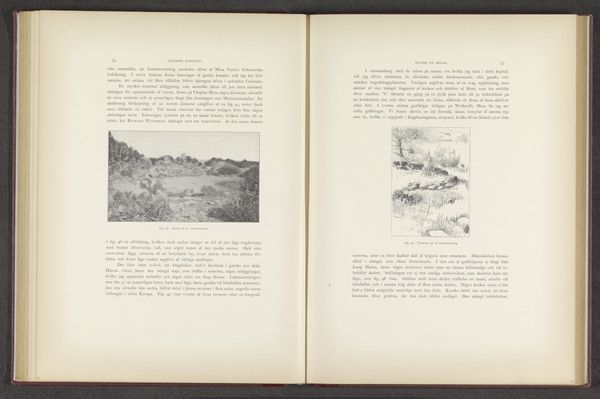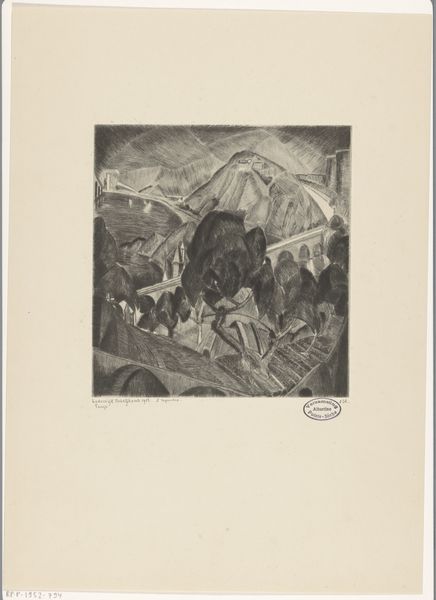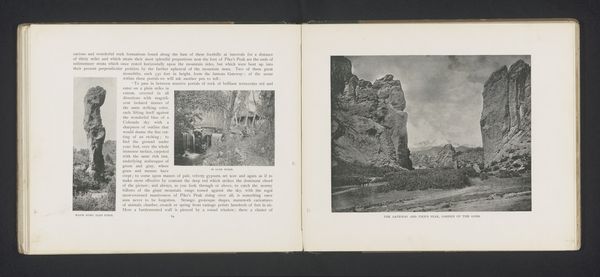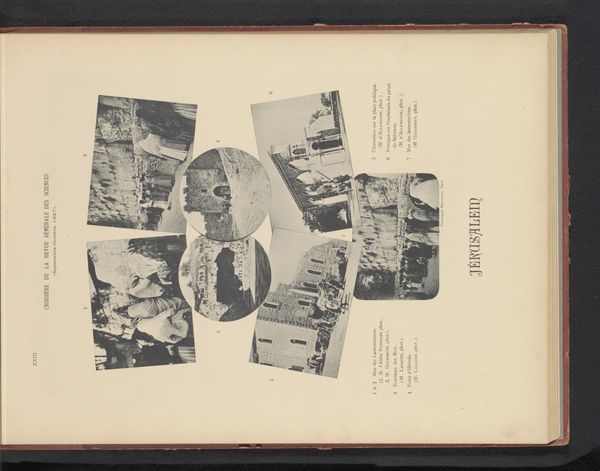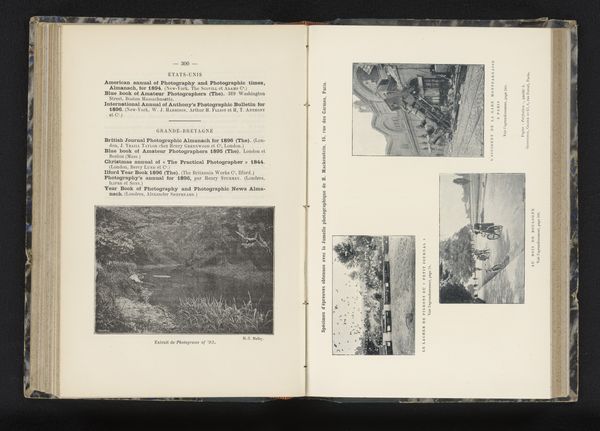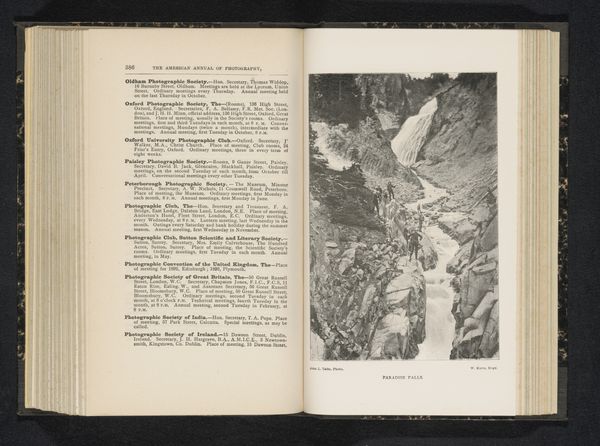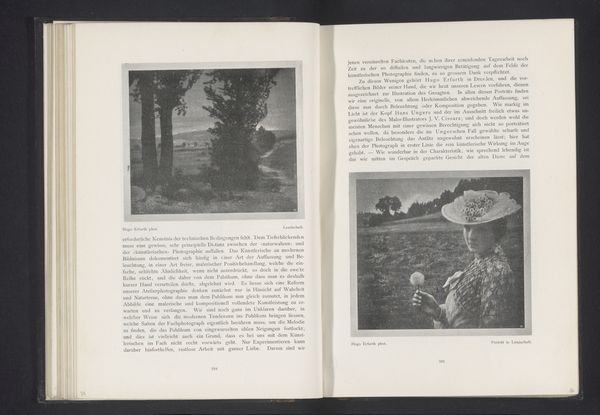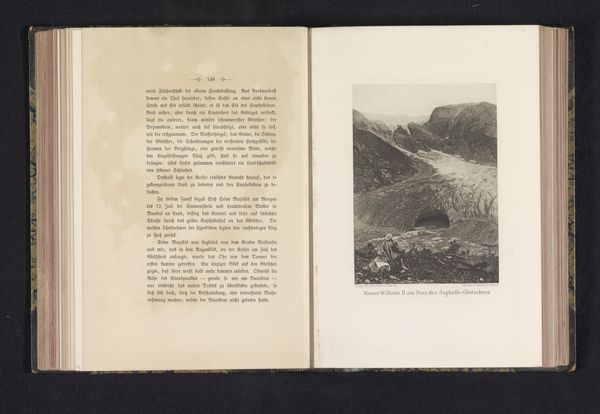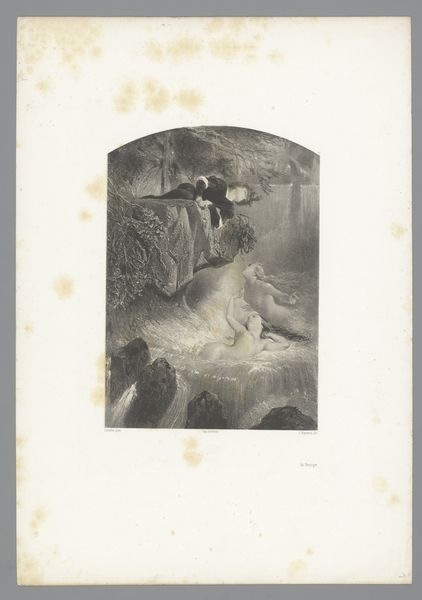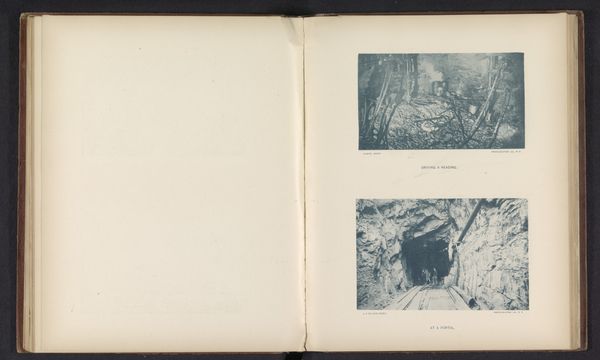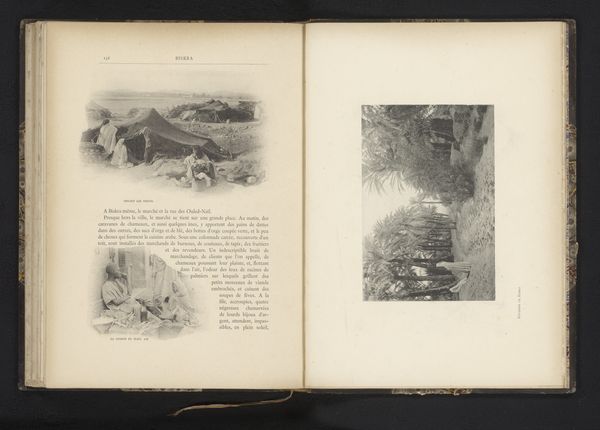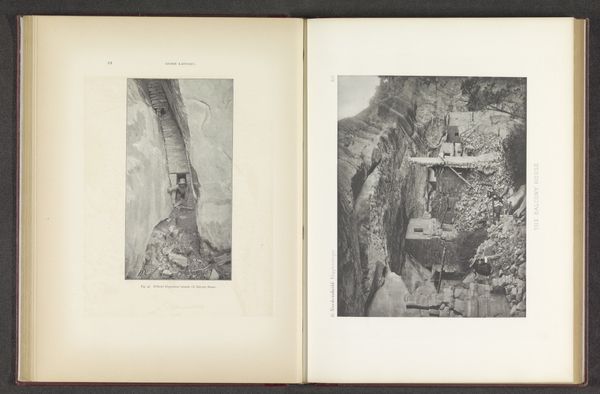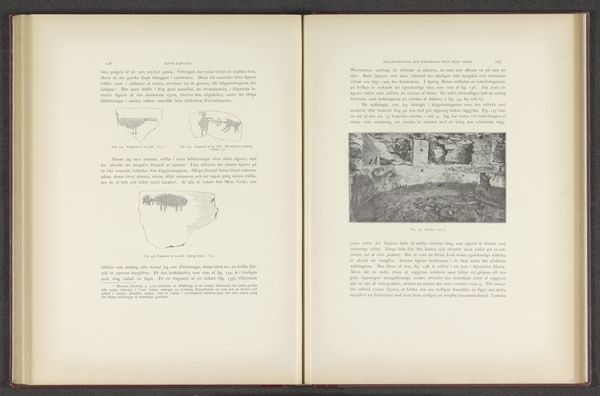
Bezittingen van kaptein Bligh, het huis van John Adams op Tahiti, de Niagarawatervallen en oorspronkelijke Noord-Amerikanen die op buffels jagen 1869 - 1882
0:00
0:00
print, woodcut
# print
#
landscape
#
woodcut
#
indigenous-americas
Dimensions: height 425 mm, width 344 mm
Copyright: Rijks Museum: Open Domain
Curator: This intriguing engraving, dating from between 1869 and 1882, presents disparate scenes united under the title, "Possessions of Captain Bligh, the house of John Adams on Tahiti, Niagara Falls, and Native Americans hunting buffalo." It's the work of Gerhardus Philippus Zalsman. Editor: It strikes me as a curious juxtaposition of images, a bit jarring in its lack of visual harmony. The tonal range feels quite limited; dark ink prevails throughout each distinct vignette. Curator: The appeal, I believe, lies in its commentary on empire and its far-reaching effects. Bligh, of Mutiny on the Bounty infamy; John Adams representing early missionary influence; Niagara as a symbol of American expansion, and the Indigenous hunting scene depicting a culture facing displacement. Editor: But consider how each panel, despite its narrative implication, functions visually. Niagara, for example, dominates the composition with vertical lines of cascading water. In contrast, the house on Tahiti offers a centered, contained structure surrounded by diffuse vegetation. Curator: Exactly. And that contrast speaks volumes about differing modes of life, doesn’t it? One asserting dominance, the other a life of modest refuge on occupied lands. Editor: And the texture! Note the dense hatching and cross-hatching used to create shadows, and how these varying strokes animate each scenario— from the implied mist around Niagara to the short strokes suggesting the buffalo's fur. Curator: It also raises questions about the perspective. It implies how Zalsman, and the intended European audience, might have understood and codified these different people and locations at the time, reinforcing a Western view of progress and civilization. Editor: True, each tiny drama is meticulously rendered, demanding close inspection of the materiality— the precision in lines of this rather ordinary engraving nonetheless offers unique glimpses into colonial and indigenous life. Curator: Precisely. For me, it is about the grand narrative being told at a time of widespread geographical exploration. Editor: And I am struck by the almost academic dissection into pictorial form—an anthology, a quartet.
Comments
No comments
Be the first to comment and join the conversation on the ultimate creative platform.
